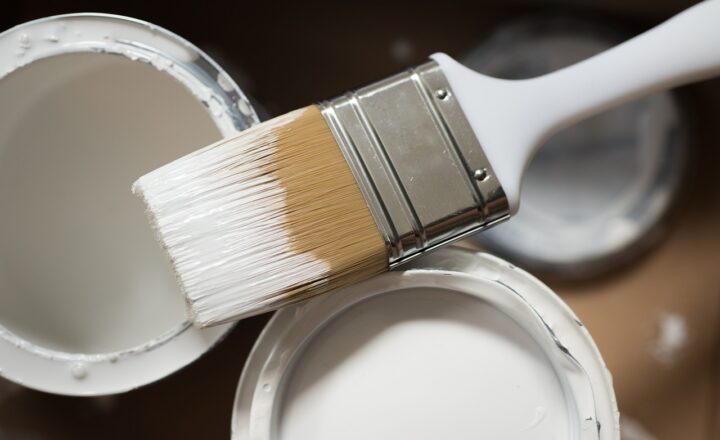The World of Silver Smithing: Crafting Beautiful and Functional Art from Precious Metals
November 14, 2024

Silver smithing is an ancient craft that continues to captivate artisans and enthusiasts alike with its blend of creativity, skill, and beauty. This craft not only produces stunning objects for daily use but also creates pieces that tell stories and carry historical significance. In this article, we delve into the rich history, essential techniques, and contemporary trends in silver smithing, allowing you to appreciate the artistry involved in transforming precious metals into functional art.
1. A Brief History of Silver Smithing
Silver smithing has a long and storied history, with evidence of its practice dating back to at least 4000 BC in areas such as Mesopotamia, where artisans crafted silver into beautiful objects for both practical use and ceremonial purposes. The craft flourished throughout various civilizations, including the Egyptians, Greeks, and Romans, each contributing unique techniques and styles.
As silver became a preferred medium, particularly in the Middle Ages, silversmiths established themselves as vital components of the trade guilds. They not only crafted exquisite items such as jewelry, goblets, and spoons but also engaged in the development of sophisticated techniques like alloying and engraving. Silver smiths gained recognition not just as artisans but also as skilled merchants.
Today, silver smithing is revered not only for its craft but also for the creativity it embodies. Many modern silversmiths revisit traditional methods, often infusing contemporary aesthetics to keep the heritage alive while appealing to modern tastes.
2. Essential Tools and Techniques in Silver Smithing
Becoming adept at silver smithing requires familiarity with various tools and techniques. Here are some of the key tools that every aspiring silversmith should have:
- Hammers: Various types of hammers are used for shaping silver, including ball peen hammers and chisels that help create textures and patterns.
- Anvils: Essential for providing a stable surface to hammer and shape the metal. They come in various shapes and sizes, allowing for different crafting techniques.
- Files and Sanders: These tools are crucial for finishing edges and achieving smooth surfaces on silver pieces, ensuring a polished final product.
- Saws and Cutters: Used to create intricate designs by cutting metal sheets into desired shapes or patterns.
- Acid Baths: Used for cleaning and etching silver surfaces, giving pieces a distinctive look or preparing them for further finishing.
Once familiar with the tools, it’s essential to practice fundamental techniques:
- Metal Forming: Involves bending, shaping, and forging metal into the desired form. This can be done through hammering or using specialized tools like rolling mills.
- Soldering: This method joins different pieces of silver together using a heat source and solder (a metal alloy). Mastery of soldering is critical to ensure durability and integrity in the final piece.
- Engraving and Repoussé: Artists create intricate patterns and designs through engraving, while repoussé involves creating raised designs on the reverse side of a metal sheet.
By mastering these tools and techniques, aspiring silver smiths can unlock their creativity and produce remarkable works of art.
3. Designing with Purpose: The Fusion of Functionality and Aesthetics
One of the unique aspects of silver smithing is the ability to blend functionality with artistry. Master artisans understand that creating a beautiful piece must not compromise its usability.
Functional Design: This includes items such as:
- Tableware: Silver cutlery, serving dishes, and goblets that enhance the dining experience while showcasing exquisite craftsmanship.
- Jewelry: Rings, necklaces, and bracelets that reflect both personal style and artistic identity.
- Decorative Items: While vases, candle holders, and ornaments add beauty to spaces, they often serve practical purposes too.
By focusing on the relationship between beauty and function, silversmiths can create pieces that resonate with users emotionally and aesthetically. Incorporating elements like texture, color, and shape into the design process helps elevate ordinary objects into cherished works of art.
4. Contemporary Trends in Silver Smithing
The world of silver smithing is constantly evolving, with contemporary artisans exploring innovative techniques and merging traditional artistry with modern aesthetics. Here are some notable trends:
- Sustainable Practices: Many artisans today are committed to sustainable sourcing of silver and eco-friendly production practices, responding to consumer demand for ethically produced goods.
- Mixed Media Art: Silversmiths are increasingly incorporating other materials such as wood, glass, and ceramics into their designs, creating unique hybrid pieces that reflect diverse influences.
- Digital Tools: The use of CAD (Computer-Aided Design) allows artisans to visualize and prototype their creations before physically crafting them, enhancing accuracy and innovation.
These contemporary practices highlight the ongoing relevance of silver smithing, allowing artisans to adapt to changing markets while preserving the essence of this timeless craft.
5. A Journey into Silver Smithing: How to Get Started
If you’re inspired to embark on your silver smithing journey, here’s a step-by-step guide to help you get started:
- Education: Consider taking classes at local art schools or workshops, which will introduce you to fundamental techniques and safety practices. Online tutorials and videos can also supplement your learning.
- Gathering Tools: Invest in essential tools gradually. Start with basics such as hammers, soldering supplies, and a bench, and expand your toolkit as you gain experience.
- Practice: Start with simple projects like crafting silver earrings or basic bracelets. Experiment with different techniques and gradually build your complexity.
- Join a Community: Connect with other artists through local guilds, workshops, and online forums. Collaborating and sharing experiences can significantly enhance your skills and knowledge.
- Create & Market Your Work: As you progress, start selling your creations at craft fairs, online platforms, or local galleries, allowing the world to experience your craftsmanship.
Embarking on your silver smithing journey can be rewarding and fulfilling, providing an avenue for self-expression and creativity.
Conclusion
Silver smithing is not just a craft; it’s a form of storytelling that bridges history, artistry, and modern innovation. As we explored the history, tools, techniques, design principles, and current trends, we hope to inspire you to appreciate the labor of love that goes into each piece crafted by skilled artisans. Whether you’re a budding silversmith or an admirer of the art, the world of silver remains a timeless medium that continues to shine brilliantly, connecting generations through exquisite craftsmanship and meaningful creations.





